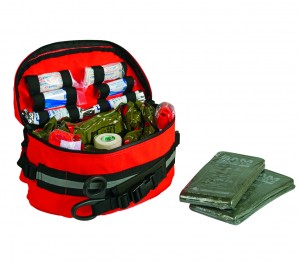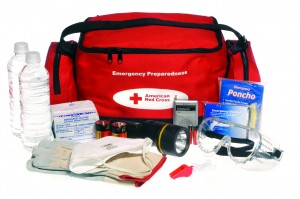
Mike Cahn, a retired New Orleans Police lieutenant and member of Crescent City FOP Lodge #2, will never forget Hurricane Katrina. His house was destroyed by raging floodwaters. He was separated from his seven-and-a-half-months-pregnant wife and nearly three-year-old son. He worked two weeks straight in horrific conditions, waging rescues in putrid water and consoling fellow officers who didn’t know if their families were alive or dead.
Making matters worse, he says, was his department’s lack of a cohesive emergency preparedness plan. “There was absolutely no plan in place,” he recalls. “I really felt like I was on my own.”
In the years since the 2005 superstorm, the New Orleans Police Department has vastly improved its emergency response, as have other departments that have endured natural and human-made disasters. Unfortunately, many are still leaving their officers, and the officers’ families, in a precarious position.
Retired Sergeant James Preston, president of the Florida State FOP Lodge and a member of the Tampa Police Department for 30 years, helped create a Disaster Response Team concept for the state’s FOP membership and is chairman of the FOP’s National Disaster Relief Program through the National FOP. He says most agencies nationwide would only average a “C” grade in their disaster preparedness and should review their response procedures on a regular basis.
That’s why it’s imperative that officers take steps on their own to prepare for an emergency, both on shift and off duty. “You may go through your entire career and never be involved in a natural disaster or large-scale emergency, or you may go through five or six,” says Preston. “The more information you have for preparedness, the better armed you are.”
The FOP is helping agencies, officers and families prepare for disasters with the Law Enforcement Families Readiness Initiative (LEFRI). Established in the wake of Hurricane Katrina, LEFRI grew out of a Department of Justice and Bureau of Justice Assistance research grant and provides a model policy that agencies from rural, suburban and urban areas can use to guide officer and family preparedness. The program helps officers and their families better understand the strains they may be under during a disaster and what steps they can take to manage the situation.
Here are some of LEFRI’s suggestions:
➜ Contact list: Officers should provide their department with a detailed contact list of family members and how they can be reached, including email and text-messaging options. Agencies should regularly test their emergency communication systems to communicate with on- and off-duty officers and, if need be, their families.
➜ Money matters: If you don’t already have direct deposit, enroll in it. If you don’t have a joint account, consider opening one. If you are called away for a period of time, you can rest assured that your family will still have income for bills, groceries, hotel stays and basic living needs.
➜ Housing: Agencies should consider providing a central housing location for officers’ families, but if your department doesn’t have predetermined emergency living arrangements for your family, make your own plan. In an evacuation, where will your family go? Ensure that you have enough food, water and basic living supplies stocked up in the event of a shelter-in-place order.
➜ Belongings: Store important documents like taxes and medical records in a weather/fireproof safe or lockbox inside your home. Don’t rely on a safe-deposit box at a bank, because what if you can’t reach it? Also, have an understanding of what items your family may need in the event of an evacuation and have “go” bags packed for each family member. This is especially crucial if you live in a flood- or tornado-prone part of the country.
It’s important to remember that no matter where you live, an emergency can strike at any time. To help establish LEFRI, Troy Mineard, a sergeant with the Akron (Ohio) Police Department and a member of FOP Akron Lodge #7, interviewed hundreds of officers who endured both natural and human-made disasters. “It was interesting talking with officers from different parts of the country and finding out what they had to say,” he recalls. “In California, they deal with earthquakes. In New Orleans, there was Katrina. In New York City, there was 9/11.”
Mineard says taking care of an officer’s family is just as important as taking care of the officer on duty. “The more the family can do, the less the officer will have to worry about and can concentrate on his job,” he explains. “I don’t mind being out in the field for two weeks and not taking a shower as long as I know my family is OK.”
That’s certainly something that would’ve eased Cahn’s mind in the weeks that followed Katrina.
Editor’s note: Click here for more about Cahn’s experience during Hurricane Katrina and information about how departments, agencies and individual officers can make a plan to prepare for the worst.
READINESS RESOURCES
➜ LEFRI has many helpful links and tips available at www.fop.net/programs/lefri, including guidelines for in-place sheltering and checklists for family preparedness and necessary evacuation items.
➜ The American Red Cross offers a wealth of safety information at www.redcross.org/prepare, including planning guides for home, school and the workplace, and a library of fact sheets and checklists on every major type of emergency from landslides to blizzards to heat waves, along with tips for pet, highway, food and water safety. You can also shop a wide variety of emergency and first-aid supplies at www.redcrossstore.org.
KITS FOR CRISIS:
An important recommendation for both personal and public safety use is an emergency kit. Keeping casualty response kits at home and in your on- and off-duty vehicles can provide peace of mind and the equipment to lend a hand in case of accidents, disasters and other crises. There are a wide variety of options to choose from, ranging from products for individuals or families up to larger kits to provide treatment to the public. Here are a few popular examples:
 ➜ North American Rescue Crisis Incident Response Kit: Designed specifically for law enforcement professionals, this kit contains a variety of first-aid products — including tourniquets, trauma dressings, splints and microshields — to provide essential support in any situation involving several victims with a range of minor to severe injuries. Durable, high-visibility and easy to carry, it’s a valuable readiness tool for delivering immediate lifesaving treatment on the go. (MSRP $300.)
➜ North American Rescue Crisis Incident Response Kit: Designed specifically for law enforcement professionals, this kit contains a variety of first-aid products — including tourniquets, trauma dressings, splints and microshields — to provide essential support in any situation involving several victims with a range of minor to severe injuries. Durable, high-visibility and easy to carry, it’s a valuable readiness tool for delivering immediate lifesaving treatment on the go. (MSRP $300.)
Get more information on this product ->
 ➜ American Preparedness Four-Person Starter Backpack: Cover the whole family with one kit. Adults will be satisfied with the array of practical supplies, including emergency food and drinking water pouches, collapsible water container, blankets, body/hand warmers, light sticks, flashlights, matches, hygiene supplies, radio and first-aid kit, while kids will stay busy with the playing cards, coloring book and accompanying crayons. (MSRP $205.)
➜ American Preparedness Four-Person Starter Backpack: Cover the whole family with one kit. Adults will be satisfied with the array of practical supplies, including emergency food and drinking water pouches, collapsible water container, blankets, body/hand warmers, light sticks, flashlights, matches, hygiene supplies, radio and first-aid kit, while kids will stay busy with the playing cards, coloring book and accompanying crayons. (MSRP $205.)
Get more information on this product ->
 ➜ American Red Cross Basic Emergency Preparedness Kit: This backpack is ideal for an individual’s basic survival needs. Not only does it include a first-aid kit, but it also has a battery-operated radio and flashlight (plus batteries), food and water packets, a blanket, poncho, breathing mask, hygiene kit and more. (MSRP $55.) Deluxe version (not shown) adds a hand-cranked emergency radio. (MSRP $95.)
➜ American Red Cross Basic Emergency Preparedness Kit: This backpack is ideal for an individual’s basic survival needs. Not only does it include a first-aid kit, but it also has a battery-operated radio and flashlight (plus batteries), food and water packets, a blanket, poncho, breathing mask, hygiene kit and more. (MSRP $55.) Deluxe version (not shown) adds a hand-cranked emergency radio. (MSRP $95.)
Read the full Spring 2014 FOP Journal issue.




